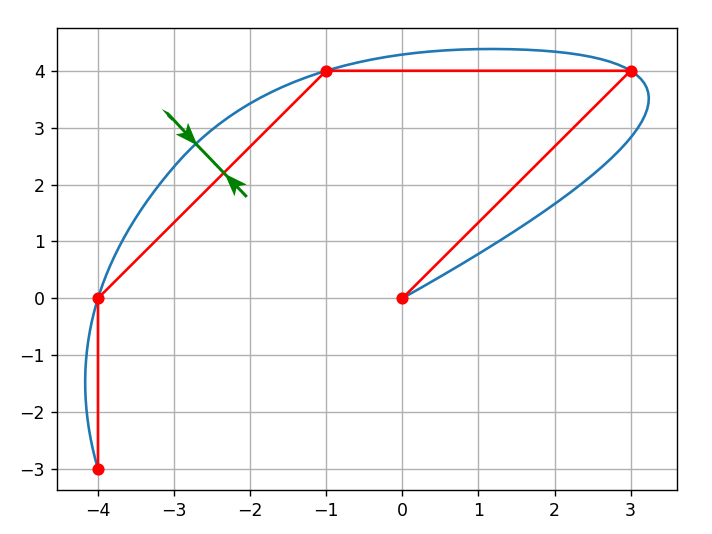-
Notifications
You must be signed in to change notification settings - Fork 152
New issue
Have a question about this project? Sign up for a free GitHub account to open an issue and contact its maintainers and the community.
By clicking “Sign up for GitHub”, you agree to our terms of service and privacy statement. We’ll occasionally send you account related emails.
Already on GitHub? Sign in to your account
Question: deviation estimation #152
Labels
bug
There is a problem with the coding or algorithms
Comments
|
I don't think there's already an algorithm that do it. So, I would do it by myself:
|
|
I can suggest a method which allows you to estimate this deviation, not exactly, but it can be enough:
Nurbs maths will guarantee that the curve never derives from your piecewise linear line more than for the value you find that way, but the deviation obviously can be less than it. |
Sign up for free
to join this conversation on GitHub.
Already have an account?
Sign in to comment
What is recipe to numerically estimate the maximum deviation of the extrapolated curve from the original piecewise linear one?

The text was updated successfully, but these errors were encountered: